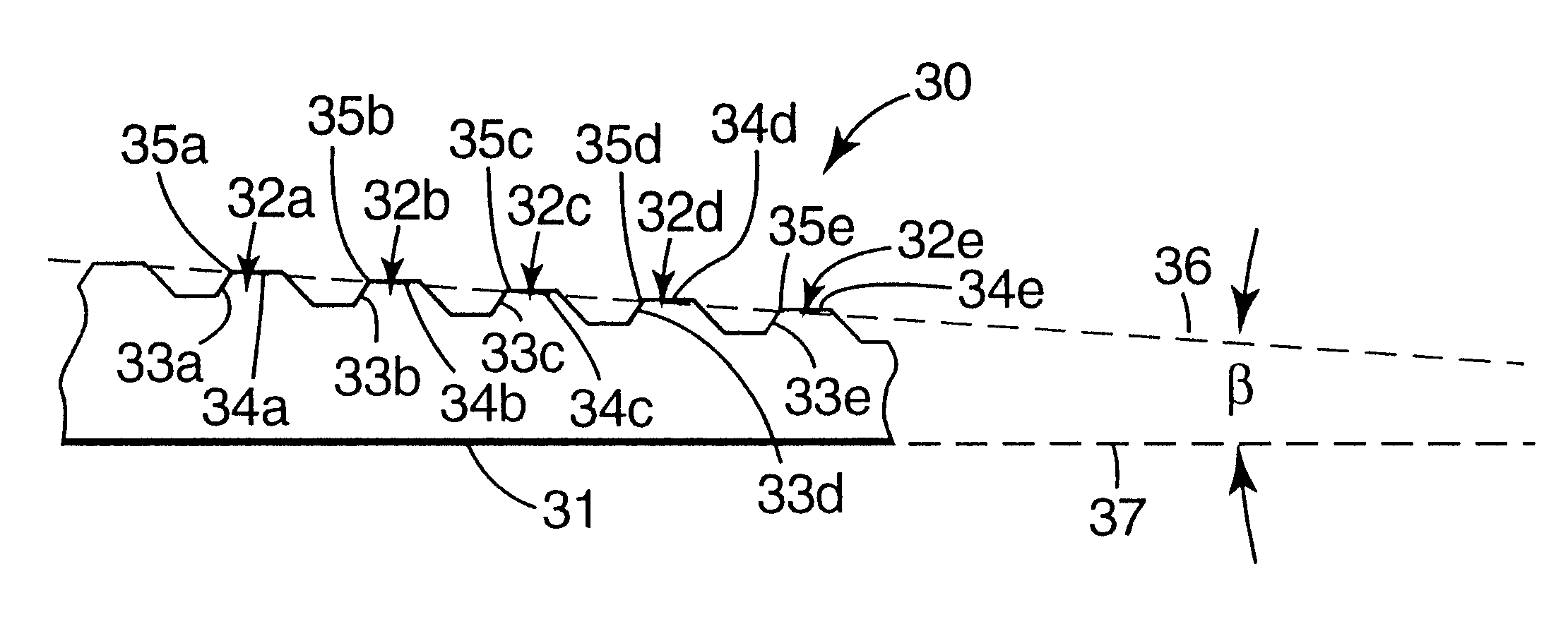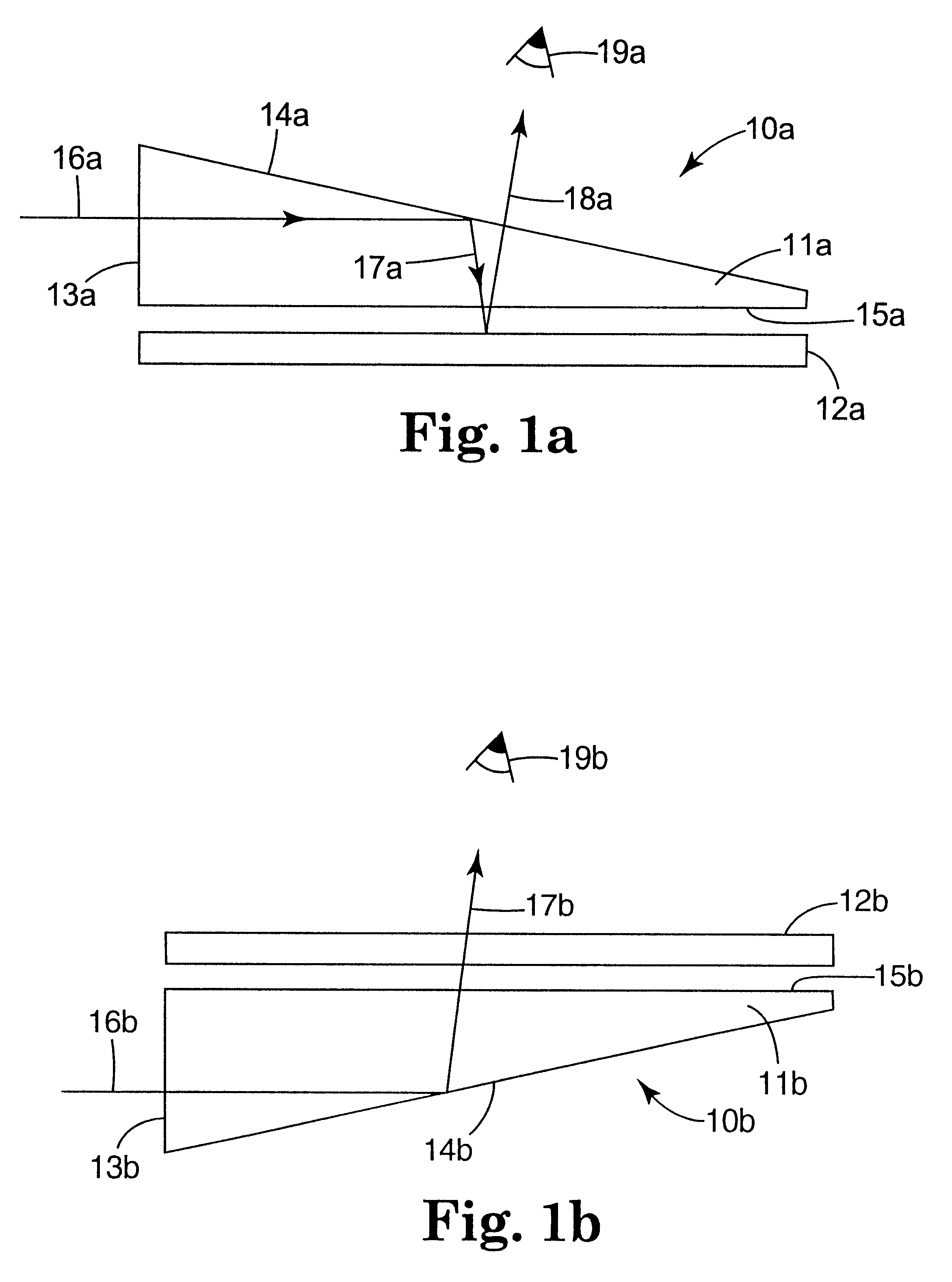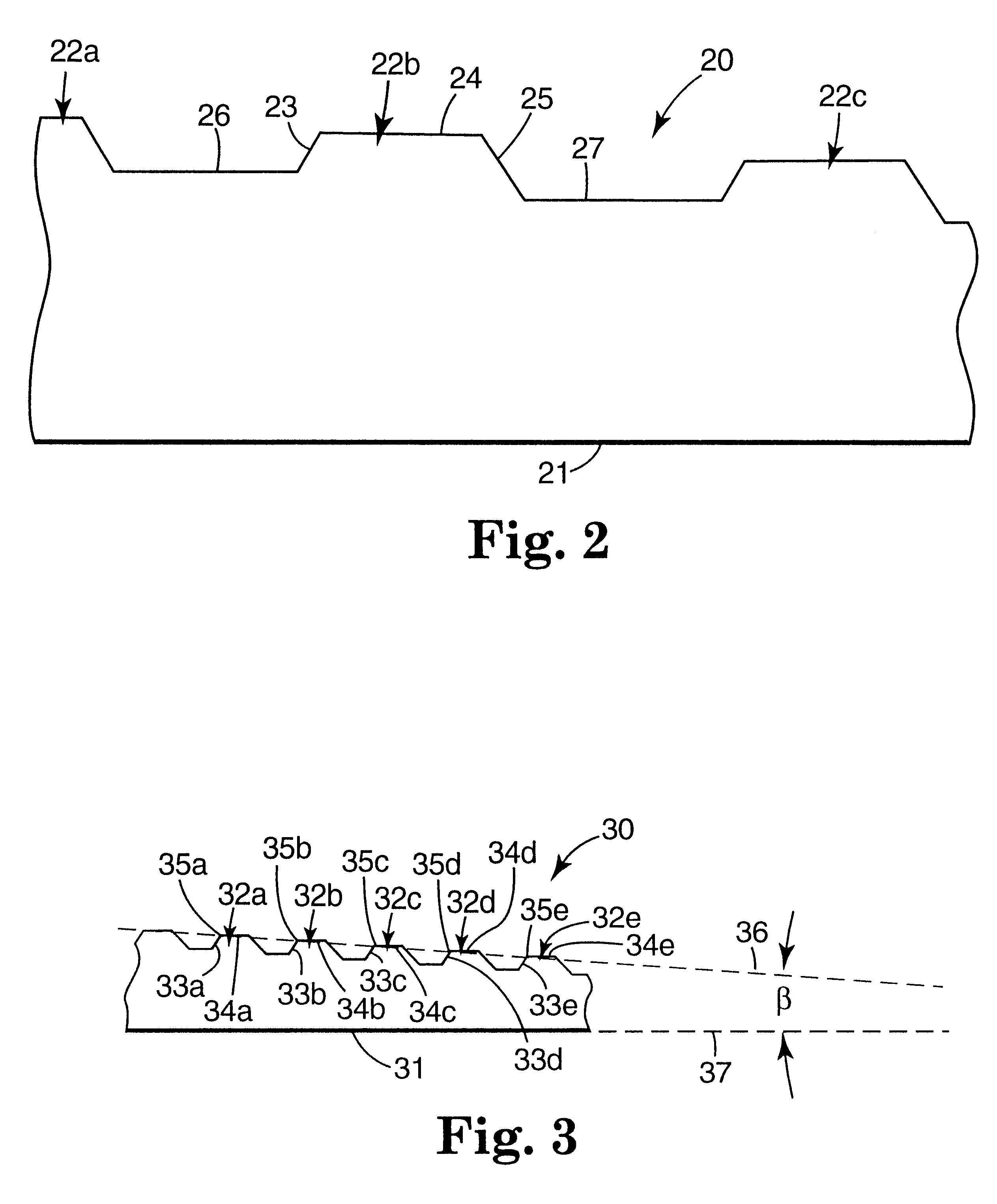Wedge light extractor with risers
a technology of risers and extractors, which is applied in waveguides, lighting and heating apparatuses, instruments, etc., can solve the problems of difficult manufacturing of current wedge designs, design that does not use all the light supplied, and inability to extract light that travels to the end of the device, etc., to achieve more efficient designs and reduce power consumption.
- Summary
- Abstract
- Description
- Claims
- Application Information
AI Technical Summary
Benefits of technology
Problems solved by technology
Method used
Image
Examples
Embodiment Construction
Two generally planar and three generally wedge-shaped extractors were simulated using CAD software and evaluated using ASAP ray tracing software. This approach gives generally good agreement with observed actual results without the need to mold and fabricate prototypes. Each extractor would be made from 1.58 refractive index polycarbonate plastic. All would have a 30 mm width, 40 mm length, and 1 mm thick input aperture. The distal ends of Extractors 1 and 2 would be 1 mm thick. The distal ends of Extractors 3, 4 and 5 would be 0.2 mm thick. The light sources were assumed to be rectangular, 30 mm long, 1 mm high, and with a Lambertian light distribution.
The general shapes of the steps or projections in Extractors 1 through 5 are shown in FIGS. 10a through 10e, respectively. The dashed lines in FIGS. 10a through 10e are drawn parallel to the reference plane. Extractors 4 and 5 would be extractors of the invention. The angles and dimensions of the segments for each extractor are liste...
PUM
 Login to View More
Login to View More Abstract
Description
Claims
Application Information
 Login to View More
Login to View More - R&D
- Intellectual Property
- Life Sciences
- Materials
- Tech Scout
- Unparalleled Data Quality
- Higher Quality Content
- 60% Fewer Hallucinations
Browse by: Latest US Patents, China's latest patents, Technical Efficacy Thesaurus, Application Domain, Technology Topic, Popular Technical Reports.
© 2025 PatSnap. All rights reserved.Legal|Privacy policy|Modern Slavery Act Transparency Statement|Sitemap|About US| Contact US: help@patsnap.com



